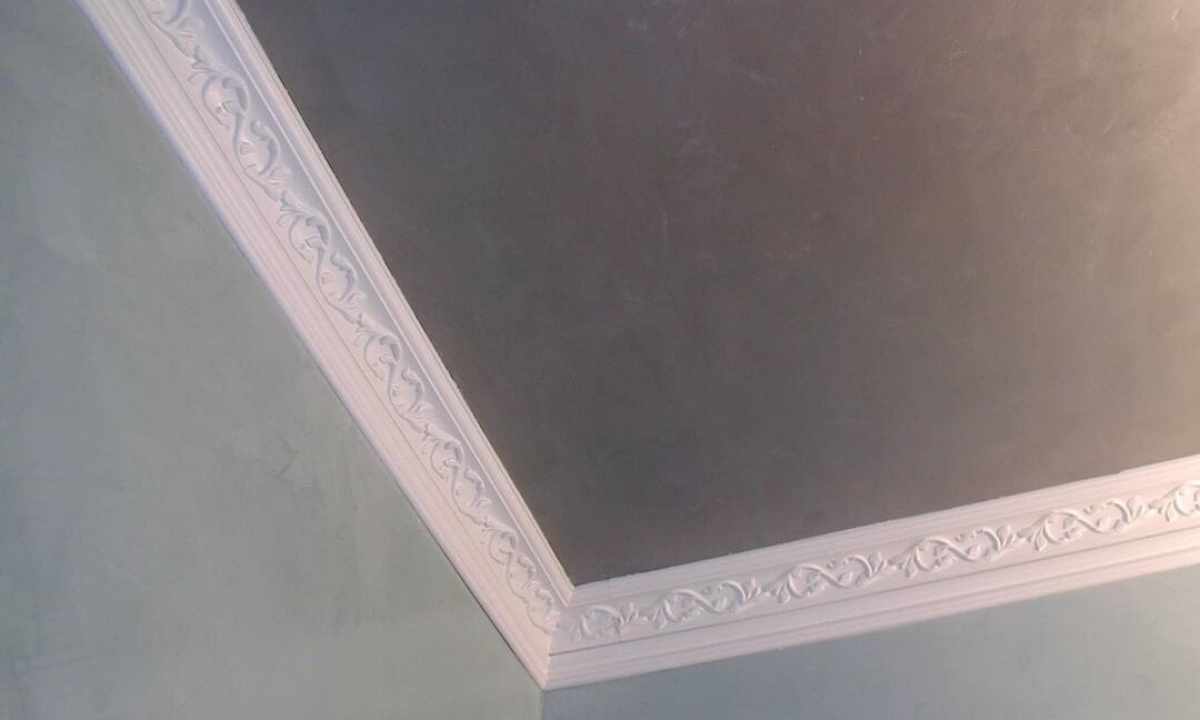Such element of decor as ceiling plinth, has to be picked correctly up, and it is necessary to fix it according to certain conditions of the room.
It is difficult to provide design of modern rooms without ceiling plinths. Other name – the fillet, plastic stucco molding or border. Be made such element of decor can from polyfoam, polyurethane, expanded polystyrene.
Its mounting belongs to the final stages of finishing and is applied to give to interior accuracy, completeness.
As it is correct to choose borders for ceiling
The ceiling plinth is made from different materials, with different sizes and registration.
It is better to get plinth with stock. Width of plinth is chosen depending on floor-to-ceiling height. Than it is more, those should choose levels of material wider.
Purchase of fillets with intricate relief means also cares on care for it – than the ornament is more elaborate, those should paint it more often or to wipe from dust.
Mounting modes of ceiling borders
1. After room papering the plinth can be fixed by means of white acrylic sealant or glue.
2. After alignment of walls, ceiling and primer the stucco molding can be pasted on hard putty or sealant. Then papering begins.
The second way a little more labor-consuming, but is better to use it. First, it is not required to establish plinth when changing wall-paper anew. Secondly, at uneven surfaces between wall and stucco molding there can be ugly slots which are much simpler for closing up before wall-paper because it is not terrible to stain wall are pasted.
Plinth from any materials fix equally. If mounting is made before pasting of walls wall-paper, the result will be much better. It is possible to mount plinth in such a way that it will look with ceiling as single whole.
The scrap of corners of fillets can call the most difficult stage of work – it is necessary to achieve such result that corners have ideally joined among themselves. For this purpose it is necessary to use the miter box.
If earlier such operation had not to be carried out, near at hand it is necessary to have spare levels – if material will be unintentionally spoiled. For cutting of corners of plinth it is possible to use template – the small pieces of levels intended for finishing approach.
Gluing of borders
Gluing of plinth should be begun with corners then flat sites are fixed. Before fixing it is necessary to moisten wall and back I will shift plinth water. It will help to make mounting easier – putty will dry more slowly.
Accurately we drive into the corner plinth level. It should try to be done as it is possible more densely. From under plinth there will be a little hard putty – she is moved away the palette. We clean surface after gluing of plinth from putty traces with damp rag.
After putty completely dries, once again carry out seal of small slots which turn out between wall surface, ceiling and plinth. It is possible to use hard putty or sealant – it is even more convenient.
With acrylic sealant it is a little simpler to paste over the room with plinth, than with putty, but at the same time additional investment will be required. After alignment of walls and ceiling usually there is a little putty, and sealant should be bought in addition.
The room up to 20 sq.m. will require 2 packs of sealant and gun. Mounting needs to be done as well as with putty. We close up slots by means of sealant.
Mounting of plinth for stretch ceilings
The technology almost differs in nothing from above. It is only necessary to consider something – for example, the plinth is chosen easy on weight, well adjacent to wall.
At stretch ceilings the plinth is pasted before works on finishing of walls are finished and wall-paper is pasted. Plinth it is not necessary to fix to cloth of stretch ceiling – only on wall. Before mounting of plinths it is desirable to protect ceiling polyethylene.
The following stages of work entirely coincide with those that are described above unless instead of hard putty or sealant it is better to use special glue.
For stretch ceiling it is the best of all to choose borders from polyvinylchloride. It both is lightweight, and will cheap manage, and besides, will provide to both stretch ceiling, and walls good protection against dirt and dust.
